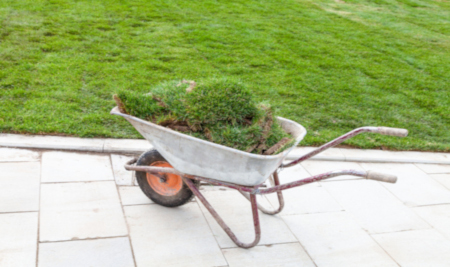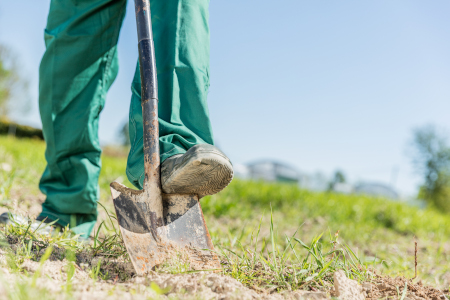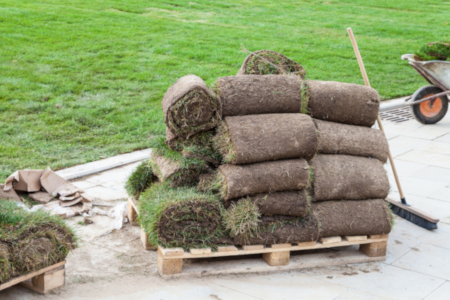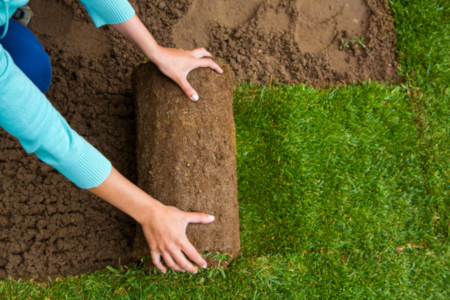How To Lay Turf For Beginners
Laying new turf can liven up any backyard. From increasing the resale value of your property to attracting new tenants, laying new turf has many benefits. But what’s the best way to lay turf in order to create a soft green lawn in just a month? Follow our step-by-step guide to laying turf to find out.
Preparing The Area
One of the most important things to remember when laying turf is that a poor base will create a poor lawn. This means that preparing the ground before laying your turf is crucial.
- Choose & Measure The Area
Before ground preparation begins you need to decide where you are going to lay the turf. For best results, ensure that the chosen area receives adequate shade throughout the day and has access to water. You will also need to measure the area to ensure that you order the right amount of turf. - Clear The Area
Once you have selected the area to lay the turf you will need to clear the area by removing existing lawn, rocks, and weeds. This is an important step as any weeds that are left under the turf will grow between the sections of turf and can prevent the roots of the turf from reaching the soil below. - Check The Drainage
You will also need to check that the area has adequate drainage (ensuring that water won’t pool on the lawn during heavy rain). For example, sandy soil has good drainage, whereas, if you have clay based soil you will need to dig down 100mm or so and add sandy loam to improve the drainage. You will also need to ensure that the soil drains away from the house and other nearby buildings. - Level The Area
Before you lay the turf you will need to level the area as laying turf on uneven clumps of soil will causes air pockets, preventing the roots of the turf from retaining moisture. This can be done by using a rotary hoe or shovel to turn the soil to ensure that the soil is finely broken up and level.
You may also want to introduce new soil to ensure the healthy growth of your new turf. When adding topsoil use a rake to spread evenly and ensure that the soil is finely broken up and level.
Note: the final height of the soil should be approximately 30 mm below the surrounding paths or edging to allow for the height of the turf. - Ordering The Turf
The turf should only be ordered once the area has already been prepared. This is because turf is a perishable product and if it is delivered before the area has been prepared it can die from sitting in the sun before it has been laid.
It is also good practise to order around 5% more than the calculated amount of turf required as it is better to have more than you need than not enough due to the time sensitive nature of laying turf.Laying The Turf
- Lay The Turf Upon Delivery
Once the turf has been delivered it should be laid immediately for best results (particularly during the warmer months of the year). The longer you leave the turf before laying it, the longer the roots will take to establish (assuming the turf doesn’t die before it is laid).
Even if you begin laying the turf as soon as it is delivered, keep the pile of turf in the shade. On hot days you will also need to lightly sprinkle the turf to prevent it from drying out. - Moisten The Soil
Do not lay turf onto a dry surface. Once the turf has been delivered, use a hose to wet the surface of the prepared area. Or, if possible, moisten the area around 6 hours before the turf is delivered. This will make the process easier as it ensures that the area will not be muddy when you begin laying the turf. - Laying The First Section
The first section of turf should be laid on the edge that is furthest away from the pile of delivered turf. This ensures that you will not have to tread over newly laid turf to retrieve each new section. The first section of turf should be laid in a corner, pressed up hard against both surrounding edges, however, it is important not to stretch the turf while doing so. - Laying The Middle Section
The same process should be repeated when laying each subsequent section of turf, ensuring that the edges of each piece are pressed up hard against surrounding sections (ensure that sections don’t overlap). This is done to prevent drying around the edges of each turf section. On hot days, each section of turf should be lightly watered before laying the next section.
Sections of turf should be laid in a brick like pattern (with the joints of the first row of turf lining up with the middle of the sections of turf in the next row). This ensures that there are no lines in the completed turf.
If you don’t finish laying all of the turf on the same day, dampen and cover the remaining turf and store it in the shade. Ensure that the unlaid turf is covered with a breathable material (eg. an old bed sheet) as tarpaulin and other plastic covers will sweat. - Laying The Last Row
In the final row the turf will likely have to be cut to fit into the remaining area. This can be done using a set of secateurs. Similarly, you may need to cut the turf to fit around any trees in the area. To do this, simply lay the turf right up to the base of the tree trunk and use the secteurs to cut to size. - Water
Use a hose to soak the newly laid turf to promote the strong establishing of its roots. The turf will need to be watered twice daily for the first 3 to 4 weeks after laying it or until the roots are firmly established.
If you’re thinking about laying turf visit your local landscape supply specialists at Wellers Hill Hardware & Landscape Supplies. Our experienced team can offer your expert advice on planning and laying new turf as well as quality tools and landscape supplies to assist in the process. Call us today on 07 3848 1682 for quality landscape supplies Brisbane at great prices.






